Grade5 music theory mock exam paper for 2018 onwards
点击以访问 5Y_Exemplar_2017_EN.pdf
点击以访问 5X_Exemplar_2017_EN.pdf
Grade 5 theory Italian & German terms (ABRSM)
This page contains the main Italian and German musical terms needed for ABRSM grade 5 theory. Pupils are required to have memorised the English translations of the Italian and German terms, in addition to knowing the terms from the previous grades.
| attacca |
go straight on to the next section of music |
| dolente |
sad, mournful |
| dolore |
grief (doloroso: sorrowful) |
| doppio movimento |
twice as fast |
| estinto |
as soft as possible, lifeless |
| incalzando |
getting quicker |
| lacrimoso |
sad |
| loco |
at the normal pitch (used often to cancel an 8va direction) |
| lunga |
long (lunga pausa: long pause) |
| lusingando |
coaxing, in a sweet and persuasive style |
| misura |
measure (all misura: in strict time; senza misura: in free time) |
| ossia |
or, alternatively |
| piacevole |
pleasant |
| piangevole |
plaintive, in the style of a lament |
| pochettino, poch. |
rather little |
| rinforzando, rf, rfz |
reinforcing |
| segue |
go straight on |
| smorzando, smorz. |
dying away in tone and speed |
| teneramente, tenerezza |
tenderly, tenderness |
| tosto |
swift, rapid (but often used in the same sense as troppo) |
| volante |
flying fast |
| |
|
| aber |
but |
| ausdruck |
expression |
| bewegt |
with movement, agitated |
| breit |
broad, expansive |
| ein |
a, one |
| einfach |
simple |
| etwas |
somewhat, rather |
| fröhlich |
cheerful, joyful |
| immer |
always |
| langsam |
slow |
| lebhaft |
lively |
| mässig |
at a moderate speed |
| mit |
with |
| nicht |
not |
| ohne |
without |
| ruhig |
peaceful |
| schnell |
fast |
| sehr |
very |
| süss |
sweet |
| traurig |
sad |
| und |
and |
| voll |
full |
| wenig |
little |
| wieder |
again |
| zart |
tender, delicate |
| zu |
to, too |
Grade 4 theory Italian & French terms (ABRSM)
| affettuoso |
tenderly |
| affrettando |
hurrying |
| amabile |
amiable, pleasant |
| appassionato |
with passion |
| calando |
getting softer, dying away |
| cantando |
singing |
| come |
as, similar to (come prima – as before, come sopra – as above) |
| facile |
easy |
| fuoco |
fire |
| giusto |
proper, exact (tempo giusto – in strict time) |
| l’istesso |
the same (l’istesso temo – the same speed) |
| morendo |
dying away |
| niente |
nothing |
| nobilmente |
nobly |
| perdendosi |
dying away |
| possibile |
possible (presto possibile – as fast as possible) |
| quasi |
as if, resembling |
| sonoro |
resonant, with rich tone |
| sopra |
above |
| sotto |
below (sotto voce – in an undertone) |
| veloce |
swift |
| voce |
voice |
| |
|
| à |
to, at |
| animé |
animated, lively |
| assez |
enough, sufficient |
| avec |
with |
| cédez |
yield, relax with speed |
| douce |
sweet |
| en dehors |
prominent (a direction to make a melody stand out) |
| et |
and |
| légèrement |
light |
| lent |
slow |
| mais |
but |
| moins |
less |
| modéré |
at a moderate speed |
| non |
not |
| peu |
little |
| plus |
more |
| presser |
hurry (en pressant – hurrying on) |
| ralentir |
slow down |
| retenu |
held back (en retenant – holding back, slowing a little) |
| sans |
without |
| très |
very |
| un / une |
one |
| vif |
lively |
| vite |
quick |
Grade 3 theory Italian terms (ABRSM)
| adagietto |
rather slow (faster than adagio) |
| ad libitum, ad lib. |
at choice, meaning that a passage may be played freely |
| agitato |
agitated |
| alla breve |
with a minim beat, equivalent to 2/2, implying a faster tempo than the note values might otherwise suggest |
| amore |
love (amoroso – loving) |
| anima |
soul, spirit |
| animato |
animated, lively |
| animando |
becoming lively |
| ben |
well |
| brio |
vigour |
| comodo |
convenient, comfortable |
| deciso |
with determination |
| delicato |
delicate |
| energico |
energetic |
| forza |
force |
| largamente |
broadly |
| leggiero |
light, nimble |
| marcato / marc. |
emphatic, accented |
| marziale |
in a military style |
| mesto |
sad |
| pesante |
heavy |
| prima / primo |
first |
| risoluto |
bold, strong |
| ritmico |
rhythmically |
| rubato / tempo rubato |
with some freedom of time |
| scherzando / scherzoso |
playful, joking |
| seconda / secondo |
second |
| semplice |
simple, plain |
| sempre |
always |
| stringendo |
gradually getting faster |
| subito |
suddenly |
| tanto |
so much |
| tranquillo |
calm |
| triste / tristamente |
sad, sorrowful |
| volta |
time (prima volta – first time, seconda volta – second time) |
Grade 2 theory Italian terms (ABRSM)
| a |
at, to, by, for, in the style of |
| al, alla |
to the, in the manner of |
| allargando |
broadening (getting a little slow and probably louder) |
| andantino |
slightly faster than andante |
| assai |
very |
| con, col |
with |
| dolce |
sweet, soft |
| e, ed |
and |
| espressivo / express. / espr. |
expressive |
 / fortepiano / fortepiano |
loud, then immediately soft |
| giocoso |
playful, merry |
| grave |
very slow, solemn |
| grazioso |
graceful |
| larghetto |
rather slow (not as slow as largo) |
| largo |
slow, stately |
| ma |
but |
| maestoso |
majestic |
| meno |
less |
| molto |
very, much |
| mosso, moto |
movement |
| non |
not |
| più |
more |
| presto |
fast |
| senza |
without |
 / /  / sforzando / zforzato / sforzando / zforzato |
forced, accented |
| simile / sim. |
in the same way |
| sostenuto |
sustained |
| tenuto |
held |
| troppo |
too much |
| vivace, vivo |
lively, quick |
 |
A wedge sign above or below the notes indicates super-staccato (staccatissimo), played as briefly as possible and possibly accented |
 |
Dots inside a slur over or below the notes mean the notes should be slightly separated (semi-staccato), but less so than notes with ordinary staccato |
 |
over or under the notes means accented and slightly separated (marcato) |
 |
over or below the note means the note is given a slight pressure (tenuto) |
Grade 1 theory Italian terms (ABRSM)
Performance directions for Piano, Strings & Brass
Grade 4 and Grade 5 (ASBRM)
This page describes the main performance direction terms and symbols used in playing piano, strings and brass instruments. The meaning of the terms and symbols need to be learnt for ABRSM grade 4 and above.
Piano performance directions: pedals and hands
| Left pedal |
Soft pedal, or Muting pedal, also called una corde. Normally three strings are used per note. When the soft pedal is pressed, the whole keyboard is shifted along so that hammers on strike two strings in the upper register and one string in the lower register |
| Middle pedal |
Sostenuto pedal (not fitted to all pianos). Depressing the pedal dampens only the notes that have been struck |
| Right pedal |
Damper pedal. When pressed, felts are lifted off the piano strings to allow the sound to be sustained. |
| |
|
 |
Press down / release the damper pedal |
 |
spread the notes of the chord quickly starting from the bottom |
| mano |
hand (mano sinistra, m.s. – left handed; mano destra, m.d. – right handed; also used for the harp) |
| Una corde |
one string, depress the soft pedal |
| Tre corde |
three strings, release the soft pedal |
| |
|
| S.P._______ |
Sostenuto Pedal – hold the sustain pedal down for the notes indicated by the line |
Performance directions for strings (violin, viola, cello and double bass)
 |
Down bow |
 |
Up bow |
| arco |
bowed |
| pizzicato |
plucked |
| sul G |
play on the G string (also sul D, sul A, sul E) |
| sul ponticello |
play near the bridge |
 |
a slur shows that the notes are to be played in a single bow stroke (either up or down) |
Mute terms for strings and brass (trumpet, trombone, tuba, etc.)
| con sordini / con sord. |
with mute |
| senza sordini / senza sord. |
without mute |
Theory – Degrees of the Scale
| Tonic |
1st note |
| Supertonic |
2nd note |
| Mediant |
3rd note |
| Subdominant |
4th note |
| Dominant |
5th note |
| Submediant |
6th note |
| Leading Note |
7th note |
| Tonic |
8th note |
The above table gives the names of each note of the scale.

As an example, the stave above shows how the degrees of the scale relate to the key of C and hence the C major scale.
If the key was F Major, the tonic would be F and the subdominant (4th) would be B-flat.
Theory Ornaments
The following illustrates the main musical ornaments and gives examples of how they might be played.
The exact interpretation of a given ornament (how it is played) is usually left to the discretion of the performer. The amount of embellishment is also very much at the discretion of the performer and often players with add ornaments (particularly to baroque music) even if it is not marked, provided it fits with the style of the piece.
Pupils are expected to be able to recognise the ornaments and name them for grade 4 and grade 5 ABRSM.
Trill (also called a shake)

Mordent (also called the upper mordent, inverted mordent, or pralltriller)

Lower Mordent (also called mordent)
Note the line through the symbol 

Turn (also called grouppetto)

Inverted Turn

Appoggiatura (also called a grace note)


Double Appoggiatura

Acciaccatura (also called a short appoggiatura or a grace note)

Portamento (played as a smooth slide between two notes)

Glissando (played as a smooth or stepped slide between two notes)

Orchestral Musical Instruments and their Clefs
The following tables list the main orchestral instruments, listed in order of highest to lowest pitch.
The tables also show the main clef used by the instruments; additional clefs use are shown in italics following the + sign.
Finally, the tables indicate if the instruments are ‘transposing’ instruments. For example, if a French Horn plays a written C, it will sound like an F played on the piano: the piano is said to play in concert pitch or in C and the French Horn in F.
The table only gives the keys of the most common form of the transposing instruments. Some instruments (especially trumpet and, to a lesser extent, the other brass and some woodwind) are also made in other keys.
Brass
| Instrument |
Clef |
Transposing |
| Trumpet |
Treble |
Transposing: in B-flat |
| French Horn |
Treble + bass |
Transposing: in F |
| Trombone |
Bass + tenor |
No |
| Euphonium (used in some of the larger orchestral works) |
Bass |
No |
| Tuba |
Bass |
No |
Woodwind
| Instrument |
Clef |
Transposing |
| Piccolo |
Treble |
Transposing: sounds an octave higher than written |
| Flute |
Treble |
No |
| Clarinet |
Treble |
Transposing: in B-flat |
| Oboe |
Treble |
No |
| Cor Anglais |
Treble |
Transposing: in F |
| Bassoon |
Bass + tenor |
No |
| Contra-bassoon (or double bassoon) |
Bass |
Transposing: sounds an octave lower than written |
Strings
| Instrument |
Clef |
Transposing |
| Violin |
Treble |
No |
| Viola |
Alto + treble |
No |
| Cello |
Bass + tenor, treble |
No |
| Double bass |
Bass + tenor, treble |
Transposing: sounds an octave lower than written |
Percussion
| Instrument |
Clef |
Transposing |
| Timpani (kettle drums) |
– |
No |
| side drum |
– |
No |
| Bass drum |
– |
No |
| Cymbals |
– |
No |
| Piano |
Treble, Bass |
No |
Voice
| Instrument |
Clef |
Transposing |
| Soprano |
Treble |
No |
| Mezzo-soprano |
Treble |
No |
| Alto |
Treble + alto |
No |
| Tenor |
Treble + tenor, bass |
If treble clef, the voice sounds an octave lower than written; this is often denoted by a small 8 placed under the treble clef |
| Baritone |
Bass |
No |
| Bass |
Bass |
No |

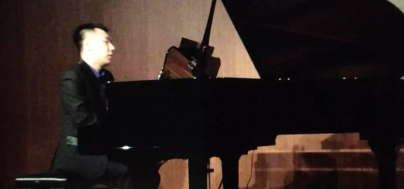



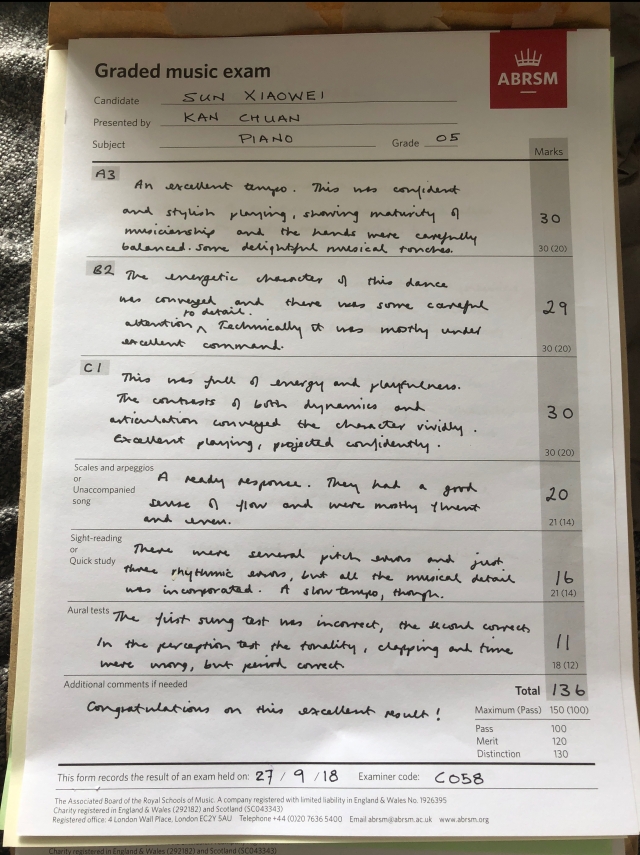
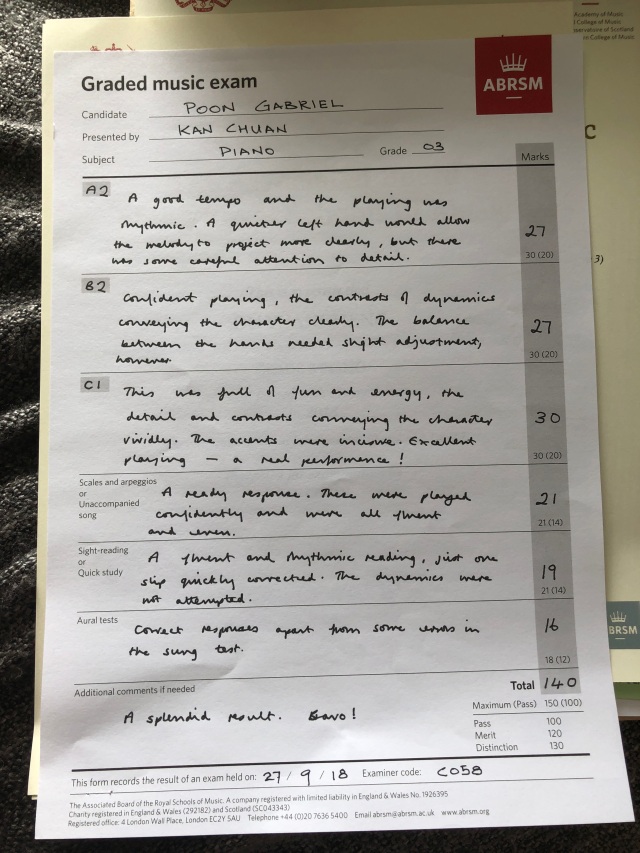
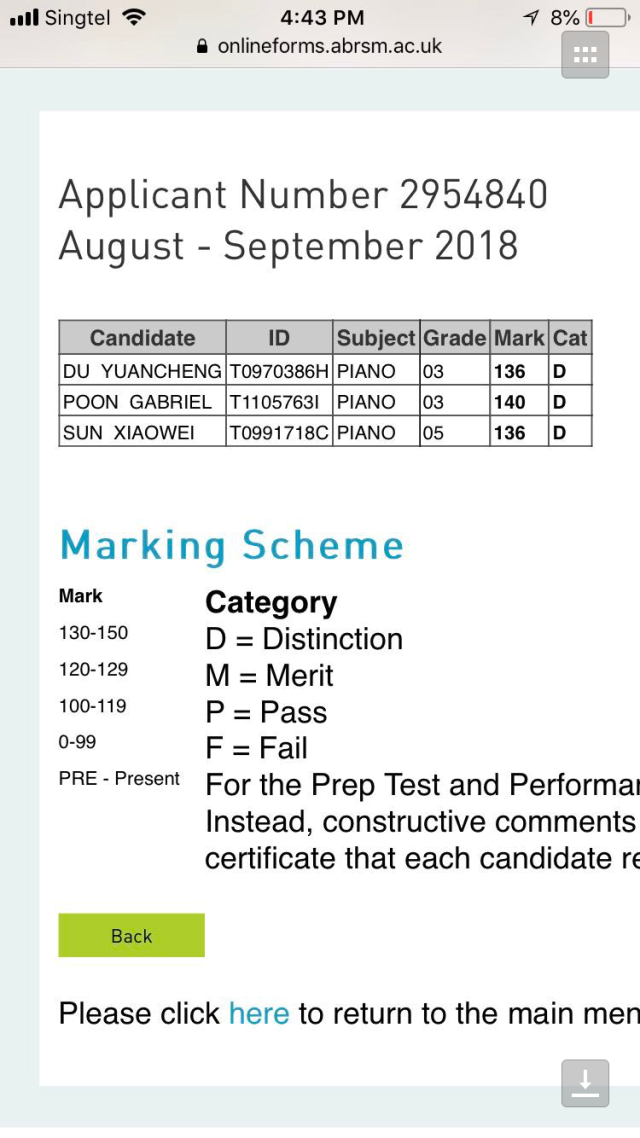
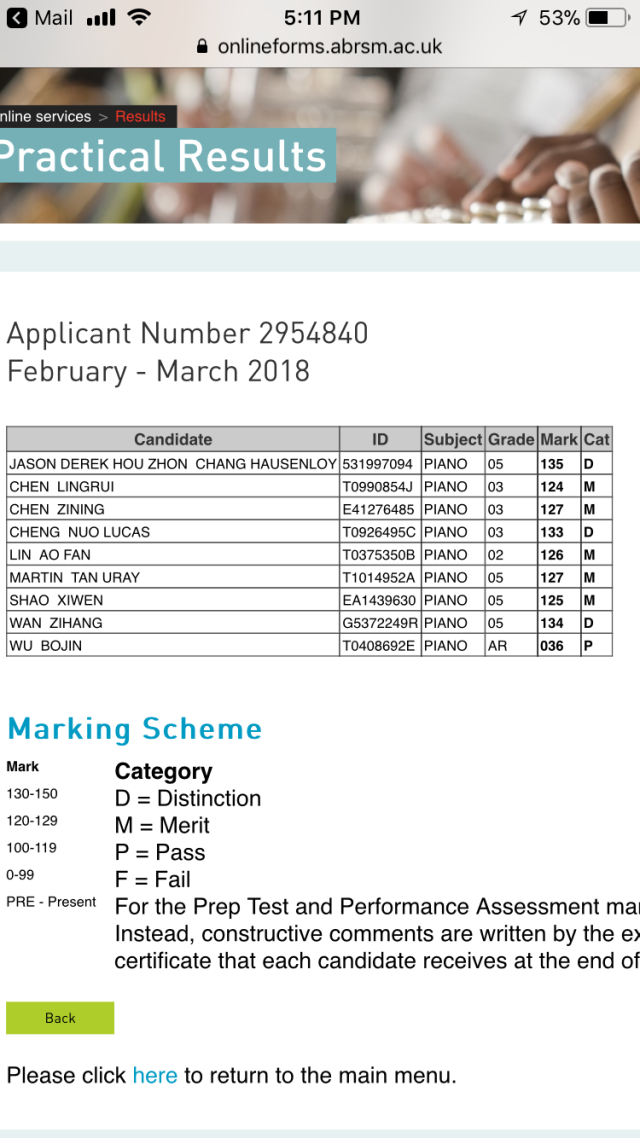
 / fortepiano
/ fortepiano  /
/  / sforzando / zforzato
/ sforzando / zforzato 







 / forte
/ forte  / fortissimo
/ fortissimo  / mezzo forte
/ mezzo forte  / mezzo piano
/ mezzo piano  / piano
/ piano  / pianissimo
/ pianissimo 































